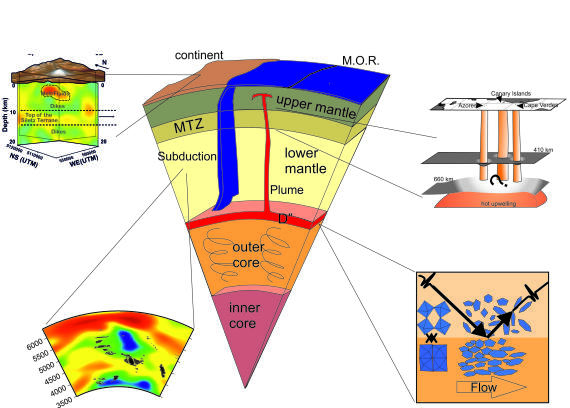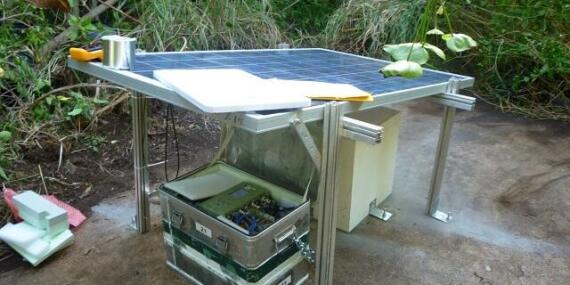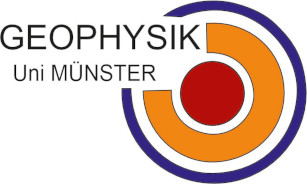


Selected projects

The interior of our Earth is not well known and one of the few disciplines that can bring information about structures and processes to the surface is seismology. But also near surface structures and processes are fields where seismology provides important data and infromation. In our group we study structures and processes from the deep Earth (inner core) to the surface and to the ice covered regions.
Some of the big questions in geophysics where seismology helps to find answers are
How does the mantle influence the core dynamics and with that the magnetic field of the Earth?
What is the mineralogy in the deep Earth?
How far does subduction reach into the mantle?
What is the reason for swarm events (e.g. Vorgtland, Greenland)
How do ice covers in polar regions (shields and shelves) behave in a changing climate?
How exact are measurements of seismic waves in the presence of heterogeneity and anisotropy?
and many more
Investigating seismic structures in the Earth helps to understand mantle processes and provides information on temperature, pressure, and chemical composition. Using seismic arrays, signal procesing methods and numerical wavefomr modelling, we gain high-resolution fine-scale images of mantle structures from the surface to the centre of the Earth and in shelf ice and ice sheet regions.
We are also involved in the Einstein Teleskop Project (Gravitational wave detection) and ErUM wave (Erforschung von Universum und Materie) as well as in the dbMISS Project, which is concerned with wind turbine noise. Further work is done on the mapping of magma regions and other structure in volcanic regions, ambient noise studies or rotational seismology. Finally we are involved in the planning of the big international project to gain high-resolution insight into the Iceland Plume
Russell, S., Magali, J-K., Vallenton, K., Thomas, C., 2025. The effect of source-side subduction on PKP dufferetial times and implications for inner core anisotropy. Phys. Earth Planet. Int., 366, 107382, https://doi.org/10.1016/j.pepi.2025.107382
For more publications click here


